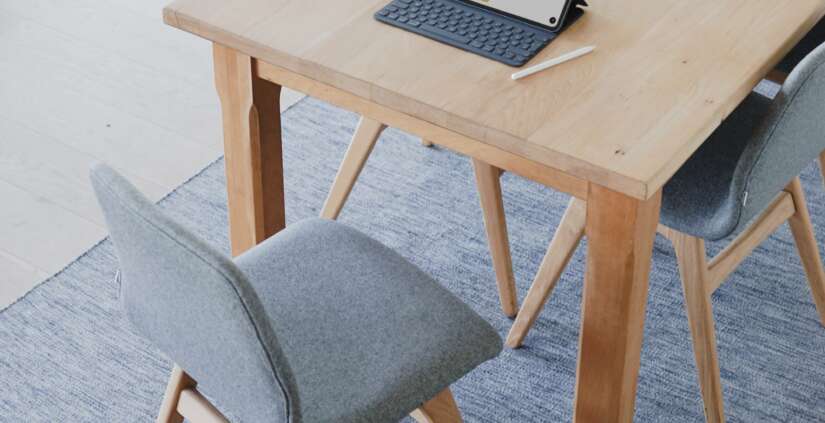Over the past decade or so, the property management world has undergone quite the digital transformation. From things like VR tours to e-signing, new technologies are continually pushing the envelope of what’s possible in multifamily. Yet, one of the most important innovations driving change in the industry isn’t one of the flashiest or most expensive. In fact, chatbots are one of the simplest and most affordable technologies a property management team can adopt. But can a bot hold its own against more traditional live chat-based customer service? Today we’ll break down the chatbot vs. live chat debate to get to the bottom of which one is really better for converting users into new renters.
Chatbot vs. live chat: the breakdown
Who will win? While both chatbots and live chat ultimately share the same purpose, there are a variety of important ways that they differ in functionality and overall helpfulness. Let’s see how each holds up to scrutiny. Time for the chatbot vs. live chat showdown.
Where chatbots go the extra mile
24/7, 365 service
Today’s prospective renters want to be able to get info on properties and have their questions answered anytime, anywhere. The beauty of chatbots is that they allow hands-off customer service whenever it’s needed, even when it’s after business hours or on holidays. Most people tend to do research when they’re off the clock, so having a chatbot available to handle requests can be a big plus for your team.
Instantaneous responses
We all live busy lives, and the shorter amount of time we can spend waiting on info or assistance, the better. Chatbots are automated, which means they can provide information almost instantaneously.
Let’s your team focus on other tasks
One of the biggest pros of having a chatbot is that it allows you to give more time back to your property management teams. Instead of employees filling their days responding to an endless amount of customer service queries, they can redirect their focus and energy into other, higher-value tasks like marketing and outreach.
What are the Limitations of Chatbots?
No human touch?
Chatbots can answer questions quickly and effectively, but when not programmed well, they can come across as cold, artificial, and unpleasant to converse with. That’s why it’s super important to customize and build personality into your bot. That way each conversation users have will be friendly, pleasant, and helpful. In fact, 33% of consumers user conversational marketing tools for scheduling and average satisfaction of a bot-only chat is 87.58% which is higher than the average rate for when prospects engage with a human.
Harder to take care of complex queries
Bots can handle simple requests like no one’s business. But they’re only programmed to understand and offer solutions to a certain set of scenarios. When it comes to more complex customer service issues, they may have trouble providing answers. They can also be tripped up by any spelling errors that occur. If a user submits a query with typos, natural language processing chatbots will have a hard time parsing through and understanding the text, whereas guided conversation can offer suggestions so that the bot never breaks. Guided Conversation bots can actually fix issues that Natural Language Processing bots encounter. Guided Conversation is a clear solution to handling prospect interaction by attending to 100% of the questions 100% of the time. Natural Language processing bots only succeed on average 66% of the time. This is why it’s important to create a seamless chatbot to human handoff when these situations arise.
What is the disadvantage of live chat?
Low volume capacity
Popular properties may have dozens (or even hundreds) of queries sent in each day. If you only have 1 or 2 people taking care of these requests, you’re severely limited in how many requests you’re actually able to complete. And that means people will take their interest elsewhere.
Longer wait times
Chatbots can answer a request in under a second. If you’re talking with a live agent, you have to sit and wait for each new message to roll in, a process that can take upwards of 30 minutes if you have a lot of questions or a particularly tricky issue that needs resolving.
Teams have to hire additional help
Like we mentioned earlier, popular properties can have hundreds of queries each day. But many teams don’t have the funds or resources necessary to hire a whole fleet of live agents.
Chatbot vs. live chat: the ultimate verdict
While each method has its advantages and disadvantages, it’s clear that chatbots are winning when it comes to customer service and renter conversion. Today, 70% of consumers prefer chat over other forms of communication, and bots can provide quick answers with no need to wait for an available live agent. What’s more, we’ve found that if a bot has a successful conversation, it has upwards of a 95% consumer satisfaction score. With properties that use BetterBot specifically, we’ve seen that 10% of all conversations starting on our chatbot convert to a viable prospect or scheduled appointment. Along with converting more prospects into renters, these automated conversations have saved over 1 million hours for leasing teams across the country, allowing them to spend more time on the tasks that matter most.
If you found this guide helpful, we’ve got more where that came from. Explore the latest multifamily news and trends on the BetterBot blog.











